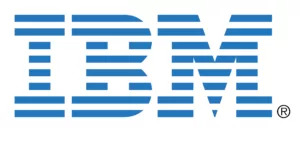IBM reported earnings earlier this week and continues to show progress in its restructuring. While their legacy hardware business is still clearly under pressure and will remain under pressure even when it again stabilizes their new initiatives are virtually all showing good growth allowing the firm to continue to invest heavily in their near-term AI future and their long-term Quantum Computing future.
Let’s talk about some of the highlights.
Z Mainframe and Legacy Collaboration, Marketing, and Commerce
One of weakness areas was in their System Z Mainframe line, but this line isn’t refreshed very often and the upgrade cycle from the last major upgrade to the Z14 which started in the 4th quarter of 2017 is slowing. This system still remains a significant portion of IBMs revenue and is surprisingly effective as one of the most unique server products in the market. Power systems were reported as strong and growing offsetting this cyclical decline but I couldn’t find a break down to determine the precise impact.
IBM had divested part of their declining collaboration and on-premise marketing and commerce products but that divestiture isn’t complete, so those products continued to drag on IBM’s performance. This is the majority of IBM’s weakness and we should see another spike in mainframe revenue when IBM once again refreshes the Z Series and the drag on revenue from the legacy offering should be largely gone once the divestiture is complete.
Red Hat
IBM moved to acquire Red Hat but that merger, while on track, is not yet contributing to IBM’s revenue however it continues to preform very well showcasing that Red Hat customers, many of which were already IBM customers, were pleased with this merger. If this trend holds Red Hat should provide a significant growth potential for IBM once the merger settles. Plan is to largely leave Red Hat alone and IBM’s acquisition process has improved sharply over the years helping to support this positive conclusion.
IBM Cloud
This was one of the key areas to look at to determine if IBM’s pivot was working and it showed the strongest growth at 12%. SoftLayer is becoming a cloud an ever more powerful cloud service under IBM’s leadership and an impressive effort given that it was only a few years back where IBM couldn’t even be considered a cloud player. This is testament to not only IBM’s significantly improved merger process but how committed there are to this relatively new, to them, area of growth. Cloud revenue now accounts for nearly a quarter of IBM’s total revenue which is up sharply from the 10% it contributed only 4 years ago. The firm can now be truly considered a Cloud power and they are significantly out performing some of their peers. One of the most powerful wins was with Vodaphone for 5G cloud support in Europe which should help allow them to ride the coming 5G wave.
Strategic Imperatives
Growing at 9% annually and now representing half of IBM’s revenue (they include Cloud) are those areas where IBM has focused the most on their strategic pivot. In addition to Cloud they include analytics and security. Profits appear to have stabilized and growth quarter to quarter is an impressive 5% suggesting 2019 will be an impressively strong year for these efforts.
Services
With a $116B backlog in services contracts and a whopping 21% in 4th quarter service signings this is IBM’s strongest performing segment. It should be significantly enhanced by the Red Hat acquisition which should settle this year (99% of Red Had shareholders have approved the merger) and they largely remain unmatched in the large enterprise segment with services. Services are up 6% year over year but the quarter over quarter performance shows impressive growth.
Conclusions:
IBM has some time ago effectively turned the corner in terms of expanding into new areas and businesses. Their efforts in cognitive computing have yet to reach potential but the opportunity remains strong and their Quantum efforts likely won’t show significant revenue this decade. They haven’t completed either their divestiture of underperforming businesses nor their acquisition of Red Hat both of which should significantly improve IBM’s performance by year end. Standing out is particularly strong was their cloud growth into what has become a significant IBM business now capable of aggressively competing against Amazon and winning.
Despite the drag of the underperforming legacy units, this was a strong quarter for IBM and there is a substantial foundation, assuming no additional outside problems like tariffs or general market pullback, for IBM’s strong outlook.








